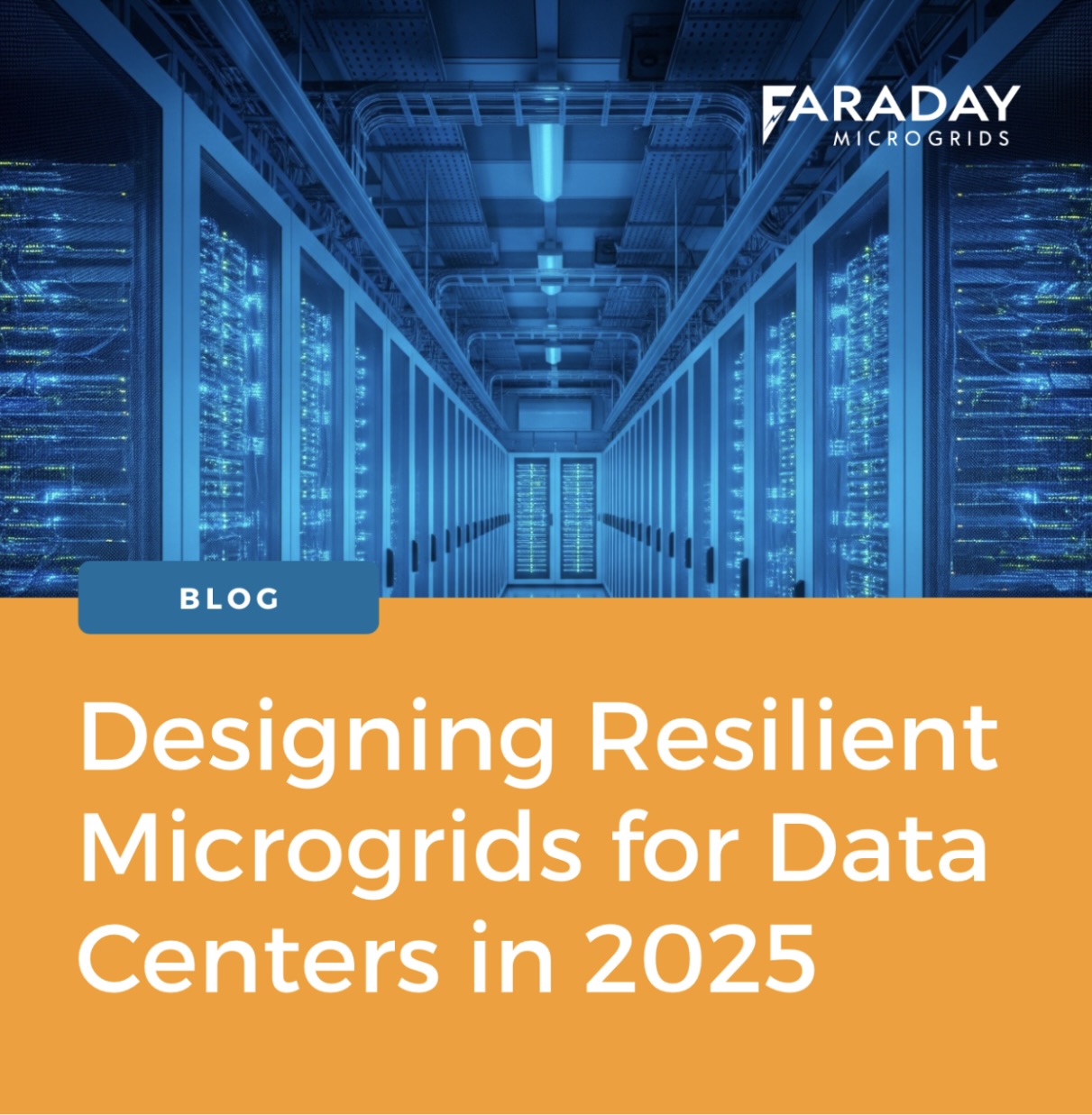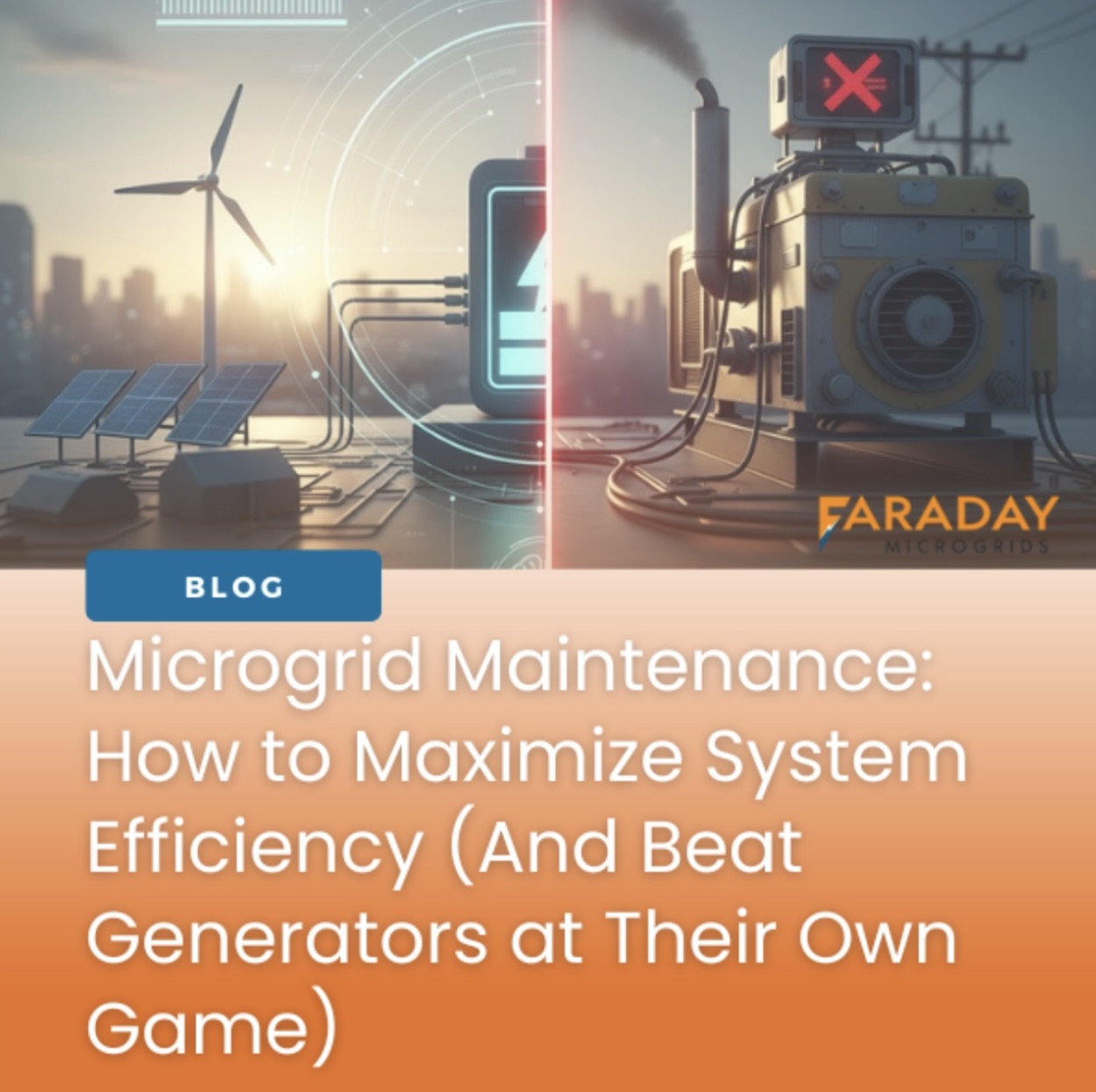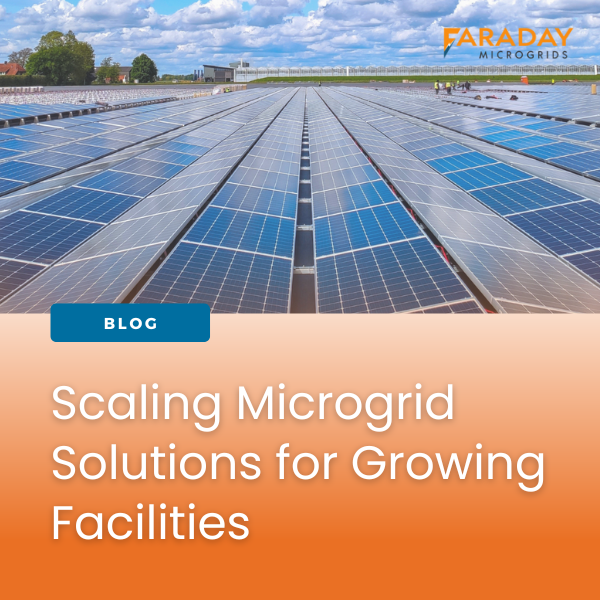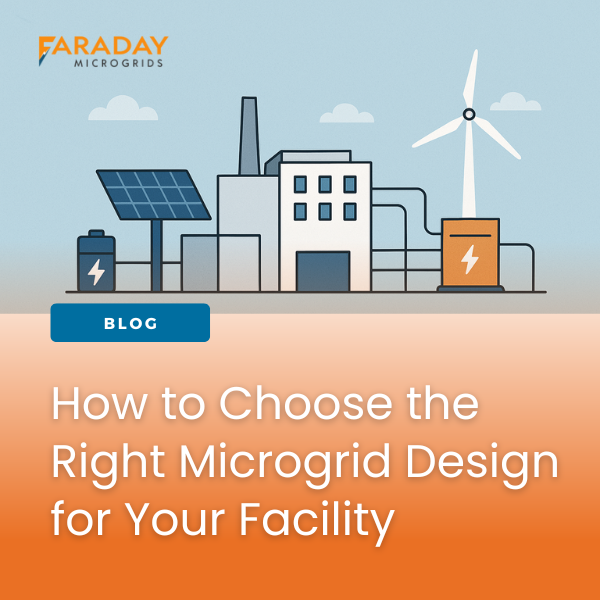Why Data Center Resilience Is More Critical Than Ever in 2025
In today’s digital economy, downtime isn’t an inconvenience — it’s a disaster. For data centers, even a momentary power disruption can lead to data corruption, lost transactions, SLA penalties, and reputational harm that costs far more than any energy bill.
“Data centers are probably the most sensitive to instantaneous power loss. They have minimal tolerance for failure,” says Dr. David Bliss, CEO of Faraday Microgrids. “They aren’t as cost-sensitive as other sectors, but resiliency is non-negotiable.”
And the risks are only growing. With more extreme weather events, an aging utility grid, and ever-increasing compute loads in 2025, traditional approaches to backup power are no longer enough.
The Problem with Relying on Generators Alone
Most data centers today still depend on diesel generators for backup. While they’re essential, they’re also single points of failure.
In fact, according to Uptime Institute surveys, more than 60% of data center outages stem from power or cooling failures — often tied to generator issues. And while diesel sits idle most of the time, it still demands expensive maintenance and fuel management, without contributing to daily operations.
How Microgrids Provide Layered, Always-On Protection
What Makes a Data Center Microgrid Different?
A well-designed microgrid doesn’t replace your generators; it layers on additional protection and turns energy infrastructure into an operational asset.
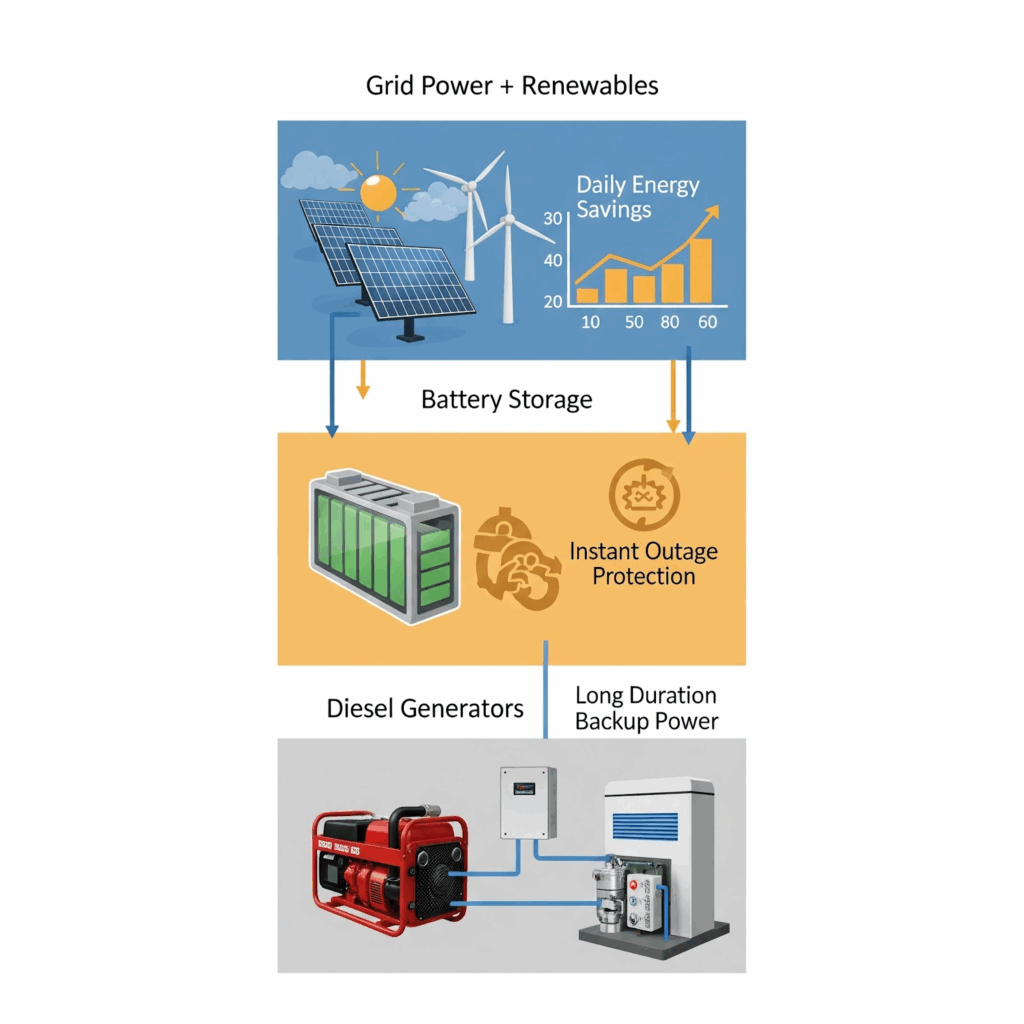
Faraday’s data center microgrid solutions for 2025 typically integrate:
- Solar or fuel cells to reduce reliance on the grid and cut carbon footprint.
- Battery energy storage systems (BESS) to provide instantaneous power during sags or outages, ensuring zero interruption.
- Existing diesel assets as a final safety layer — but now exercised less often, extending lifespan.
This creates a multi-tiered system that dramatically reduces the chance of a single-point failure.
Key Design Considerations for Data Centers in 2025
Integration Without Disruption
Faraday works with your existing UPS, generator, and switchgear architecture to build a microgrid that supports — not complicates — your redundancy model.
Advanced Controllers
Smart microgrid controllers coordinate all assets, prioritize critical loads, and island seamlessly from the grid without human intervention.
Continuous ROI
Unlike diesel alone, microgrids can operate daily, offsetting grid energy costs and qualifying for substantial tax incentives. As Dr. Bliss puts it, “A diesel generator is a dead asset unless you’re in Alaska running it 24/7. Microgrids can operate routinely, support resiliency, and offer ROI by offsetting daily energy use.”
Real-World Example: Resiliency Without Compromise
At a major healthcare campus in Ontario, Faraday developed a microgrid combining solar, batteries, and fuel cells — a blueprint easily adapted to data centers. The system not only maintains critical operations during outages but also lowers long-term operating expenses.
By designing microgrids that run daily (not just in emergencies), facilities see in 2025:
- Up to 50% reduction in grid energy costs from day one
- Improved Power Usage Effectiveness (PUE) and sustainability score
- Significantly reduced maintenance costs on generators
What Happens If You Don’t Adapt?
Without a modern microgrid strategy in 2025, data centers face:
- Increased risk of SLA penalties and reputational damage from avoidable outages
- A continued gamble on generator reliability alone
- Escalating utility bills and carbon costs as rates rise and policies tighten
Take the Next Step Toward True Data Center Resilience in 2025
Stop betting your uptime on a single backup generator. Build a layered energy strategy that turns power risk into a competitive advantage.
✅ Maintain 24/7 operations — even when the grid fails
✅ Reduce energy costs and carbon impact from day one
✅ Meet stakeholder demands for resilience and sustainability
Secure your data center’s future with Faraday — schedule a consultation today.

